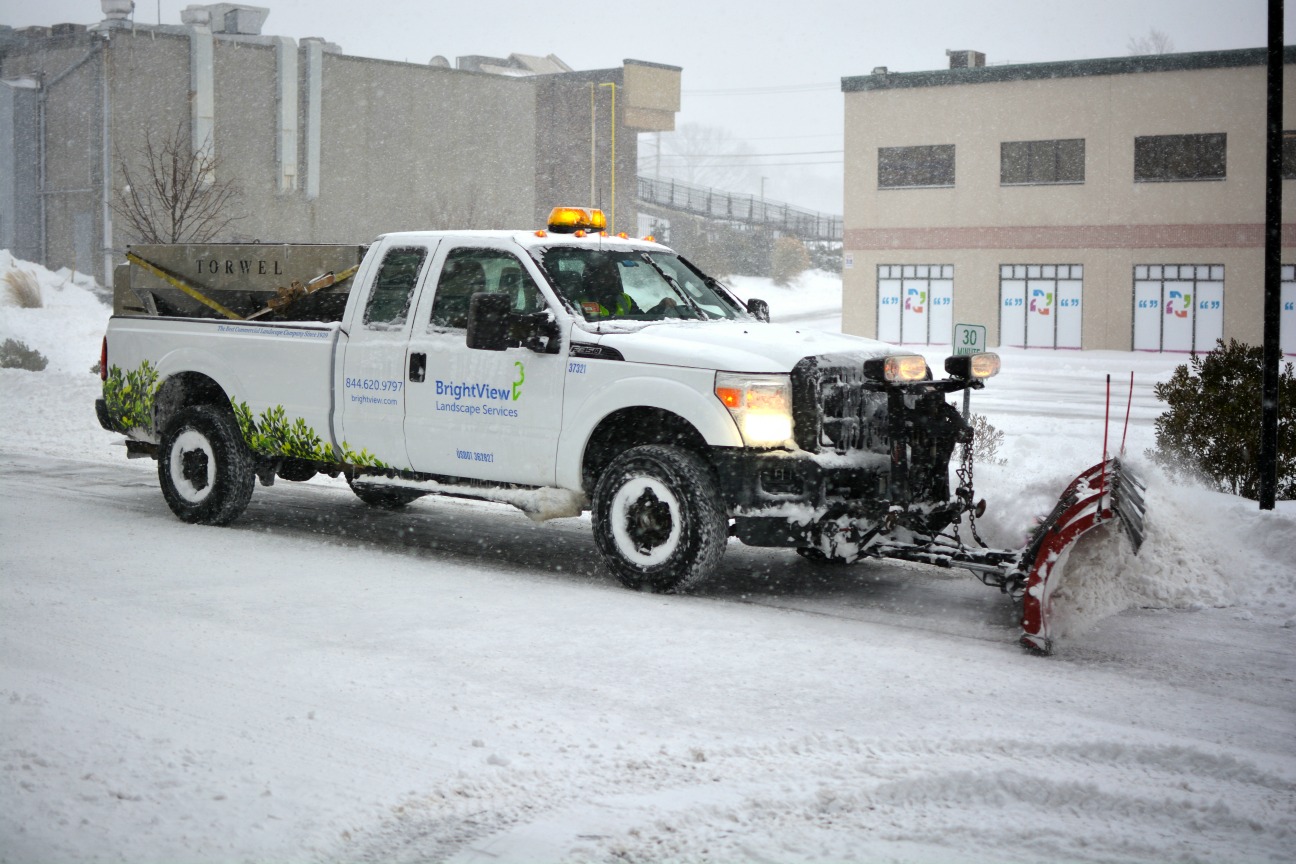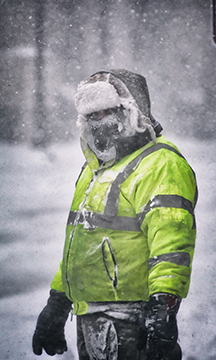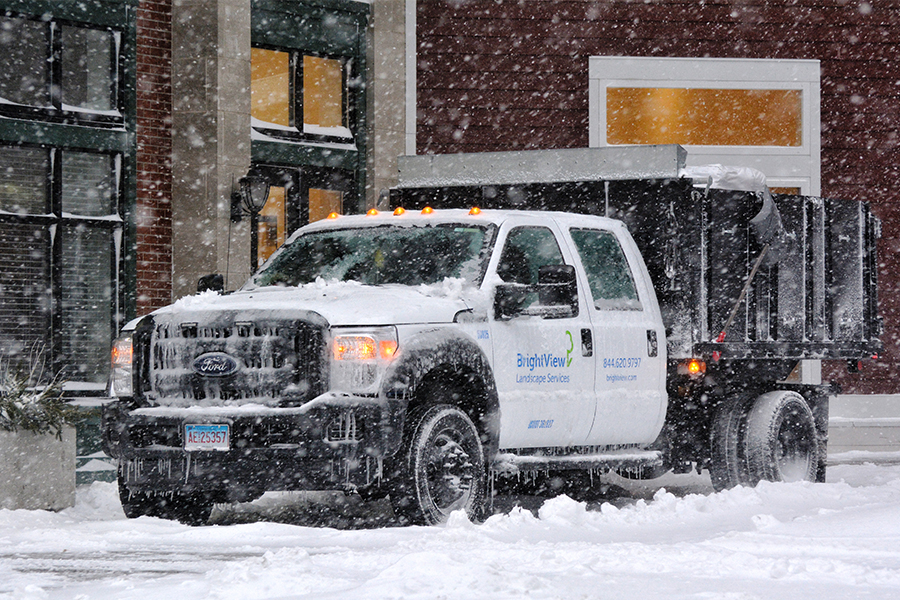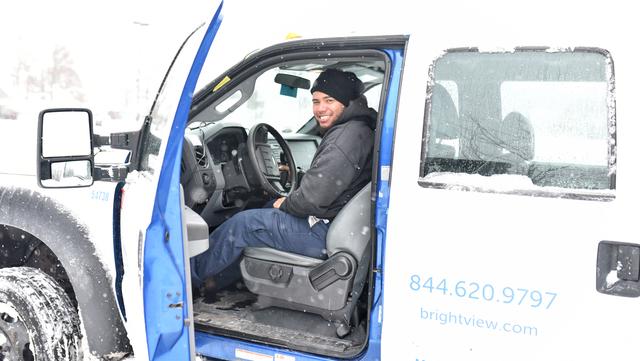
BrightView’s East Coast Teams Respond to the “Bomb Cyclone”
Snow, dangerous wind, flooding, and record low temperatures stretch from Florida to Maine

Last week's "Bomb Cyclone" affected the entire East Coast, with heavy snow and bitter cold from Maine to Florida.
BrightView teams fought through the hurricane-force winds, white-out blizzard conditions, flooding and record breaking low temperatures.
Record snowfall fell throughout the region, including southern cities like Tallahassee, Fla., and Charleston, S.C. – which saw 5 inches – and northern ones as well, including Boston. Bangor, Maine, recorded more than 18.3 inches.
“The drifting snow from the wind was terrible,” said Dave Harter, BrightView Northeast Regional Snow Manager. “The estimates for Long Island and most of the northeast were significantly underestimated, so it initially caught a lot of neighborhoods off-guard.”
Though the storm brought flooding to a portion of the northeast, BrightView teams followed the typical routine when heading out to clear roadways and pathways at client sites.
“We could clear a parking lot and turn around and it would be covered in snow again,” Harter said.
Some coastal New England areas, such as Boston, experienced flooding, with icy water deep enough that people had to be rescued by boat.

Along with the storm came dangerously low temperatures and wind chills. Record-cold temperatures were recorded Jan. 5 and 6 in many locations along the east coast. JFK Airport in New York City saw a low of 9 degrees, while Charlotte and New Bern in North Carolina hit an even colder 8 and 5 degrees. Parts of Eastern Pennsylvania dipped below zero.
Mount Washington in New Hampshire saw temperatures on Jan. 6 of minus-36 degrees with hurricane-force gusts of 92 mph bringing the wind chill down to a brutal minus-90.
“This is definitely the coldest event we’ve had in quite some time,” Harter said. “The extreme cold also wreaks havoc on machinery. Fuel in some diesel trucks will turn into a jelly and prevent trucks from moving. We tried to plan for and take extra steps to make sure our machines were able to run and that we could do our best to prevent it from happening.”
Even Florida experienced unusual cold, which is affecting animals and landscaping.
“The extreme cold weather we saw last week will inevitably result in cold-damaged plant material in most of Florida,” said Ian Rodriguez, BrightView Director of Technical Services. “Damage is typically most severe in open areas of a landscape away from buildings and tree canopies. In all types of plants, cold damage goes hand-in-hand with leaf desiccation due to winds and cell damage.”
Rodriguez advised Florida branches that on woody plants, leaves are the most commonly damaged parts and can blacken and become brown and papery. A Severe sign of damage is if the bark on trees and shrubs splits or separates on branches and trunks. Severe damage to a palm tree can affect its health for several years. Any frond with at least some remaining green can help the palm to recover and shouldn’t be removed.
When temperatures approach 20 degrees, it can begin to cause permanent damage to turf, including St. Augustine grass, Zoysia grass, Bermuda grass, and Bahia grass. It will typically turn brown, but once dormancy breaks when it begins to warm up, adding fertilization can speed up the turf’s recovery.

“All-in-all, maintaining good soil moisture is key, but just make sure to avoid overwatering as it can promote disease in turf,” Rodriguez said.
Areas of Virginia got hit particularly hard with Virginia Beach receiving up to a foot in snow. BrightView teams from northern Virginia and Washington, D.C., traveled to the coast to help the local teams.
“We had about 80 additional team members and 50 pieces of equipment to help us respond to our clients quickly and deal with what Mother Nature gave us,” said Chris Greene, Vice President and General Manager of BrightView’s Mid-Atlantic region.
The record-breaking low temperatures led to dry snow, which allowed high winds to cause significant drifting and white out conditions.
“The extremely cold temperatures and wind made this a challenging storm,” Greene said. “I couldn’t be more proud of how our teams handled this event to ensure each other’s safety and take care of our clients.”
BrightView crews respond to extreme weather conditions caused by bomb cyclone, Total Landscape Care
For more information and/or permission to use BrightView images and assets, please send all media inquiries to [email protected]
Be Ready Before The First Snowfall
Take the hassle out of dealing with snow and ice. Our experienced team and comprehensive services ensure you’re prepared for anything.




